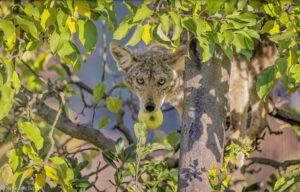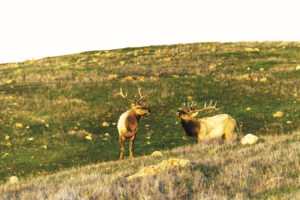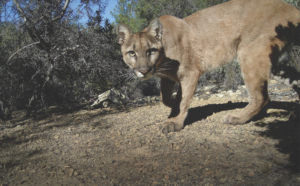De Anza Community College student Daniel Gray is a little nervous as he begins speaking to me in front of his instructors and fellow students in a culvert under Bailey Avenue south of San Jose. But his nervousness melts away as he critiques a study done by a consulting firm to assess the impact of a plan for a new college campus nearby. “It was a two-day survey,” he says. “What we have learned from tracking is that a minimum would be 90 days and the best would be an entire year. The animals move differently in the dry season and the wet season.”
Gray is one of 25 students in a unique program that teaches community college students professional wildlife survey skills while providing valuable long-term data for the ongoing debate about how to keep Coyote Valley passable for wildlife. Though massive residential building plans for the area have been put on hold, Gavilan College has proposed building a campus in the northeast corner of the valley; the De Anza students say that would be a big problem for local wildlife.
Students in De Anza’s Environmental Stewardship program form research teams and gather data in the field using gps units, photography, plaster casts, and basic tracking. Since such work is typically done by professionals, student findings are vetted by outside evaluators.
- An automated camera catches a black-tailed deer running through a culvert. Photo courtesy De Anza College Wildlife Corridor Stewardship Team.
As we stand between the two mountain ranges that frame the valley–the Diablo Range to the east and the Santa Cruz Mountains to the west–student Rick Malupo gestures at the open farm fields and roads in front of us. “Basically this area is the best corridor for animals to travel through,” he says. Both ranges include some of the most intact habitats left in the Bay Area. “If you lose that connectivity, you pretty much condemn a species to just one area.”
And that can be a dire sentence. For example, says instructor Tanya Diamond, an adult male mountain lion will kill its own young if they stay in his territory too long. “You really need a space where juveniles can disperse,” says Diamond.
Since December 2007, bird tallies have identified 160 species, 25 of which either are rare, have special status, or both. Students also found ample wildlife use of culverts under major roads and Highway 101. Camera traps show that all these roadways are currently passable by deer, bobcats, mountain lions, coyotes, and other large mammals. Culverts tend to get built along riparian pathways that are natural thoroughfares for wildlife.
Other animals might be more apt to use an open crossing. De Anza students have documented tule elk that live on the Diablo side of the valley lining up near Highway 101, unable to cross. Prompted by the De Anza students’ research on open wildlife bridges in other regions, the Santa Clara Habitat Protection Plan has dedicated funds for the creation of a similar bridge here.
Students in the program don’t just learn the value of wildlife corridors. They also receive specialized training that will allow them to document wildlife movement for public agencies like the Valley Transportation Authority and Santa Clara Valley Water District. “A student like [Malupo] won’t have to be an intern,” says Diamond. “He can lead a research team with this training.”
The students’ research has recently been in the public eye because of controversy over Gavilan College’s development plans. De Anza students used their own data to refute Gavilan’s claim that its proposed 55-acre campus could coexist with the wildlife passing through Coyote Valley. In an op-ed piece in the San Jose Mercury News, Environmental Studies chair Julie Phillips said the development “will permanently destroy a key wildlife corridor in the region.”
Phillips wants her department to share its methods, including her new “corridor curriculum,” with other community colleges around the state. Further plans include a Wildlife Corridor Institute to train more students and to advocate for habitat connections across Northern California. Meanwhile, her students plan to study a broader range of species and use their data to showcase Coyote Valley’s ecological value.
Go to www.deanza.edu/es to learn more about De Anza’s Environmental Studies program.

.jpg)




